Comparison of popular Java-based open source ERP systems

Let’s start by briefly answering the question: what is ERP? ERP stands for Enterprise Resource Planning and represents a class of business management software that is used to monitor and manage various aspects of business operations, e.g. supply chain management, finance, marketing and sales, manufacturing, product planning and others. What makes this type of software so powerful and demanded is connectivity with company’s databases that provides real-time data thus empowering immediate reactions to unexpected situations, early detection of alarming trends, and unified view of the company’s health.
ERP Market Landscape
The ERP software market is dominated by behemoth companies who established their presence on this market decades ago – SAP, Oracle, and Microsoft are all in the top 5. However, their year-to-year growth rates are modest ranging between 1 and 3 percent. One of the major reasons for that is certain rigidity and inability to adapt to changes quickly enough – they cannot decide to add a new feature to the next release because one of their clients is asking for it. Being somewhat cumbersome, huge ERP manufacturers naturally focus on same size clients – large corporations. However, the corporate world of today is slowly but steadily coming to understand that aptitude for swift change and transformation is a life-saving skill. Therefore, the interest in and demand for the ‘biggies’ shrinks leaving them with their existing customer base and forcing them to rely mostly on complimentary services and maintenance.
Meanwhile, the vibrant stream of flexible cloud-based ERP systems is flooding the market. These guys are born with the new culture of agility, adaptability, and accessibility in their bloodstream. They caught the wave that the big players will not risk catching, and are riding it. The key advantages that attract the audience are on-demand scalability, flexible business models application, intuitive pricing strategy, and great responsiveness to changing client needs. As the startup spirit penetrates the companies or all shapes and sizes, there is a growing affection with being lean, getting immediate results, and other efficiency-oriented trends. This also applies to the type of software the companies prefer to use.
As most businesses these days rely on some kind of ERP system, the market of ERP tools flourishes, and everyone can pick the one that best suits their needs. Today we will look at the subset of enterprise resource planning systems that are open source, in other words – free, and are driven by Java.
1. Apache OFBiz (https://ofbiz.apache.org/)
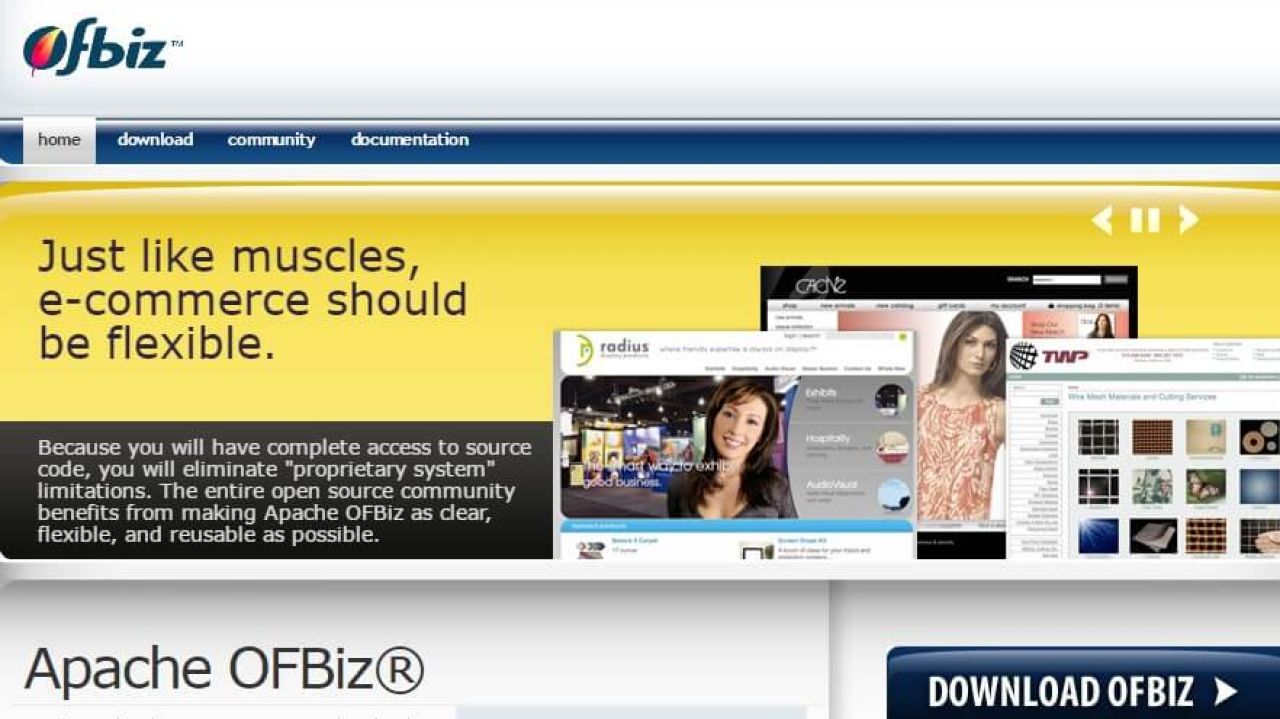
OFBiz is an enterprise resource planning software from Apache foundation also including CRM, E-Commerce component, Supply Chain Management, Manufacturing Resource Planning, and some other tools.
Features:
- Suitable for large corporations
- Product catalog management
- Sales and purchase order management
- Pricing and Promotion management
- Warehousing operations management
- E commerce Content management
2. Scipio ERP (http://www.scipioerp.com/)
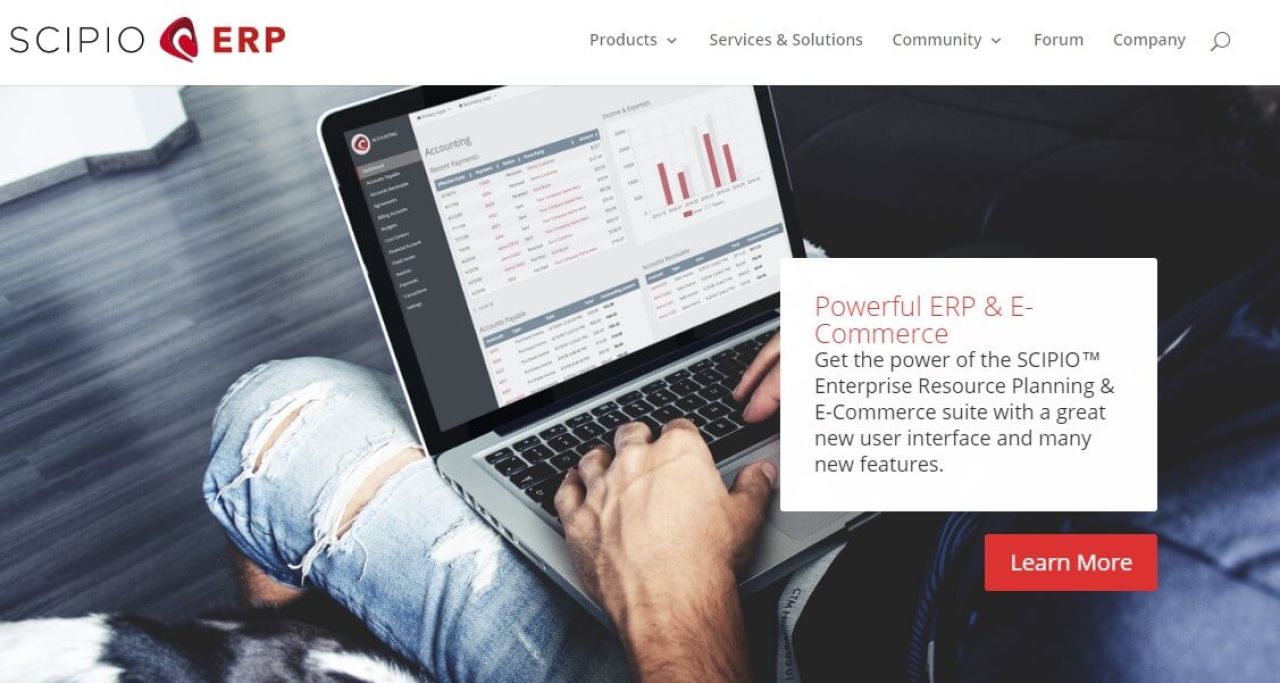
Scipio is a modern, user-friendly ERP and E-Commerce suite based on Apache OFBiz. This tool has just recently been released, and promises abundance of features to ensure bet fit in each specific situation, customization to get rid of unnecessary modules and add the needed ones, and high performance empowered by use of shared context, use of OFBiz process flows, and processing of output in a CMS.
Features:
- Product and catalog management
- Promotion and price management
- Order management
- Warehouse and fulfillment management
- Manufacturing management
- Accounting management
- Large macro library for ease of customization and development
- Modular design
- Ability to add new business functions upon request
- Crisp and functional interface with adjustable themes
3. Openbravo (http://www.openbravo.com/)
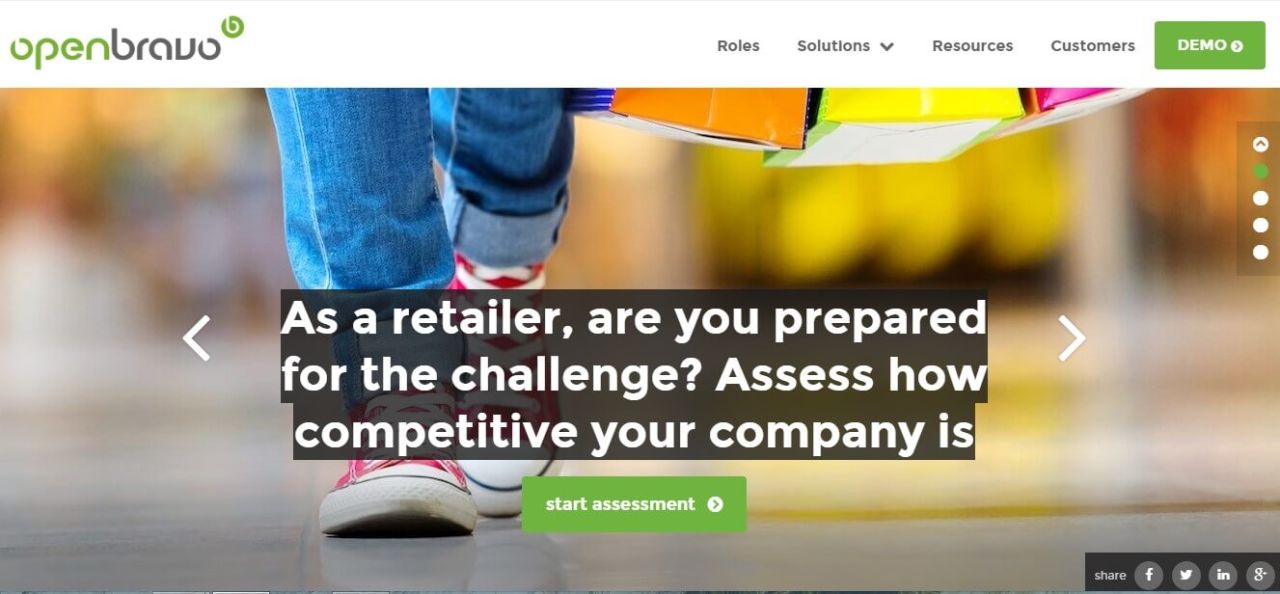
Openbravo is a powerful ERP software for omni-channel retail management headquartered in Spain. The tool enables businesses to revolutionize their retail presence to demands of the present day, ensures inventory visibility across locations, optimizes operational performance, and concentrates management of all retail functions in a single hub. It also takes care of financial matters and takes advantage of real-time monitoring of company’s cash flows, resources, and products.
Features:
- Supply chain management
- Sales and promotions management
- Management of general and administrative operations
- Visual and flexible business intelligence and analytics
- Modular design
- Availability of Openbravo Commerce Cloud
- Mobile-friendly
- High performance irrespective of the business size
4. Opentaps (http://www.opentaps.org/)
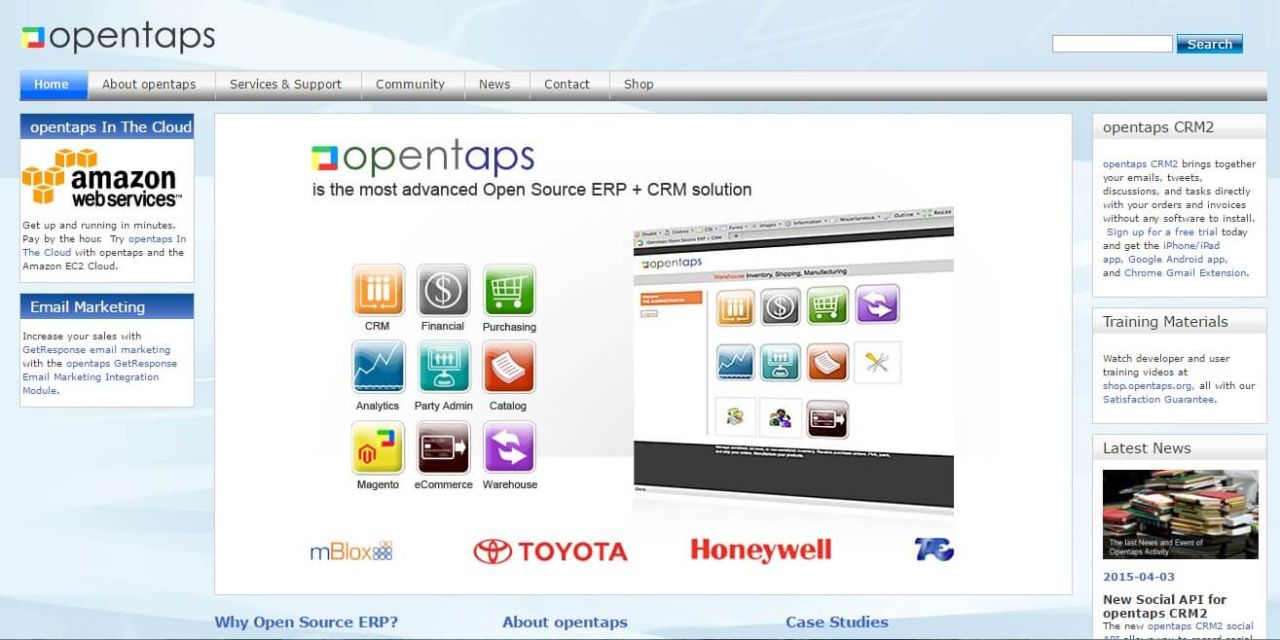
Opentaps is an integrated ERP and CRM toolset for easy optimization of business of any scale. It caters to the needs of all types of businesses such as retail, e-commerce, manufacturing, distribution and others. Opentaps is a preferred ERP of Toyota and Honeywell.
Features:
- Warehouse and Inventory management
- Supply chain management
- Financial management
- Deep data analysis
- Coordination of customer relations
- Sales management
- Manufacturing process control
- Financial management
- Great integration capabilities
- Mobility support
5. iDempiere (http://www.idempiere.org/)
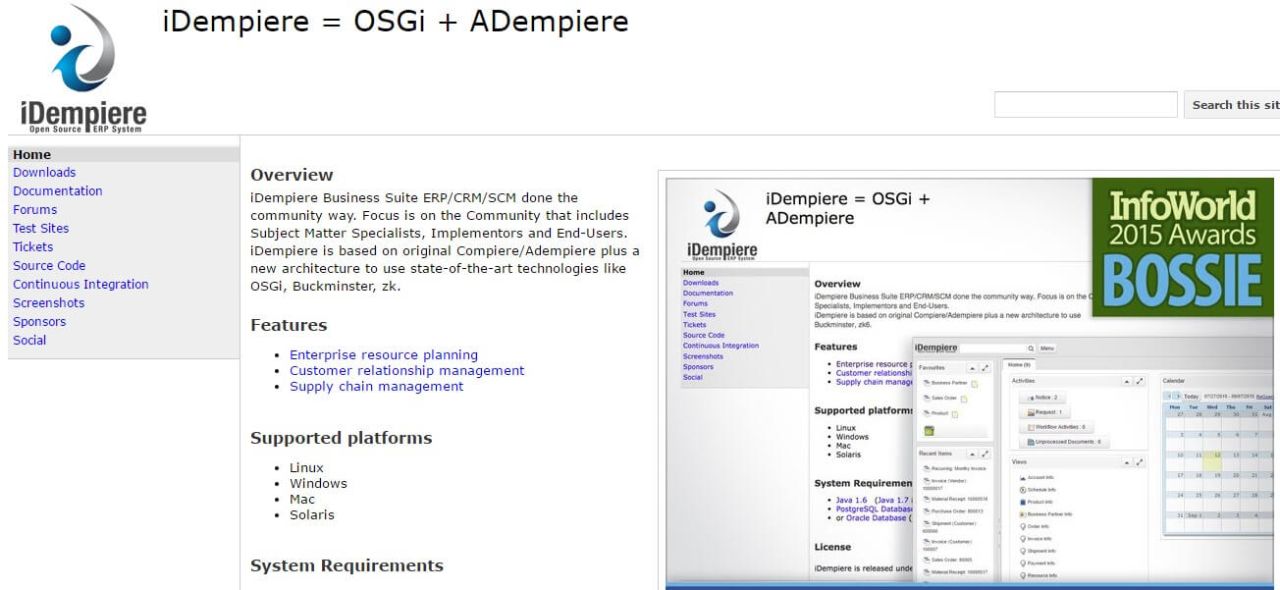
iDempiere Business Suite is a comprehensive yet simple ERP + CRM + SCM software kit (a more advanced and successful child of its predecessor Adempiere, http://adempiere.org/site/). It is a winner of an award for the best open source software app in 2015 and 2016, which says something about its quality.
Features:
- Multiple tenants
- Multiple account schemas
- Support of multiple business units simultaneously (e.g. branches, plants)
- Support of over 15 languages
- Supports of various national currencies
6. ERPNext (https://erpnext.com/)
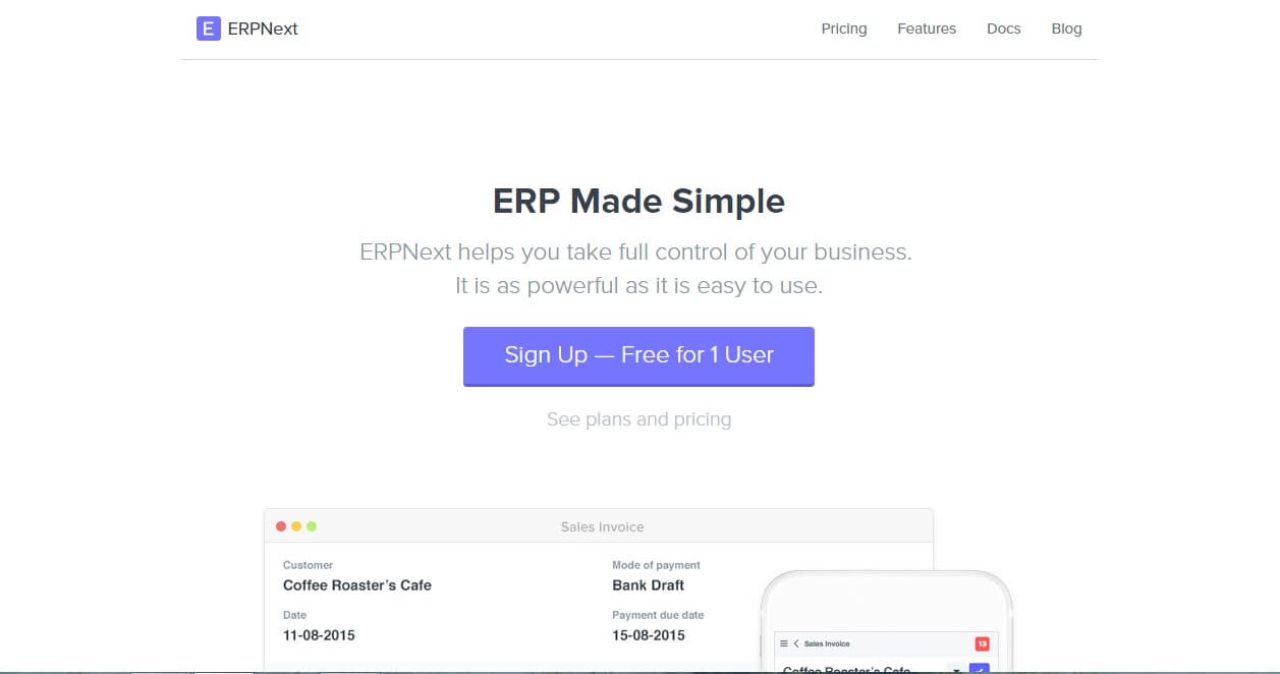
ERPNext is a light-weight yet powerful software for small and medium-sized business management. It incorporates tools addressing most functional areas within the company, and is capable to adapt to you’re the way your business is run.
Features:
- Customer relationship management and sales operations
- Procurement and inventory processes
- Manufacturing management
- Payments and invoices management
- Projects planning and tracking
- HR management (payroll, sick leaves)
- Helpdesk for collecting feedback and solving customers’ issues
- Ecommerce website generator
- Versatile reporting
- Mobile-friendly
- Multilingual (over 70 languages)
7. Dolibarr (https://www.dolibarr.org/)
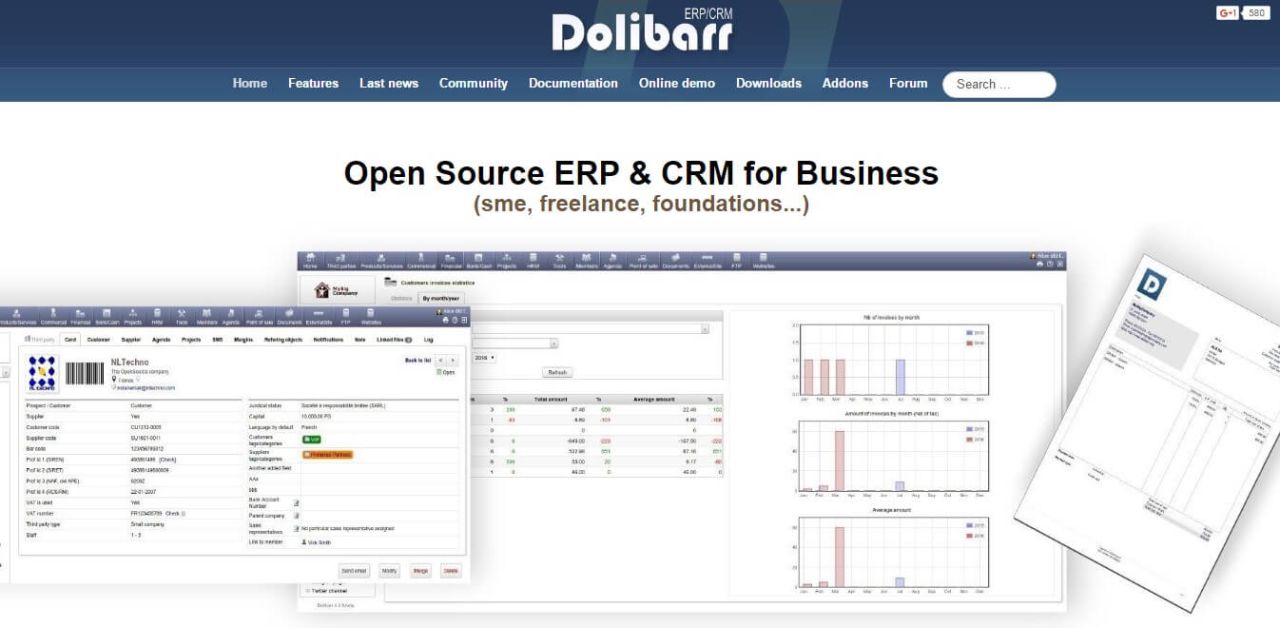
Dolibarr is a great example of on-demand scalability, highly flexible setup opportunities, and support of all possible deployment options (standalone, mobile, cloud). This ERP solution is ready to use even without customization as all of its numerous modules are interrelated and are tied together into a solid all-in-one tool to address rapidly changing business needs.
Features:
- Enterprise Resource Planning
- Customer Relationship Management and Sales (prospects, orders, subscriptions)
- Human Resource management (employee interaction, permissions, timesheets)
- Finance (payments, billing, bank reconciliation)
- Manufacturing, warehousing and procurement (products and services, stock levels, purchasing, shipments)
- Marketing (emails generations, events, surveys)
- Productivity (project management, tasks allocation, interventions, agenda)
- Dynamic modules activation
- Multiple operating system support (Windows, MacOs, Linux)
- Proprietary Dolistore with dozens of additional packages and modules
8. VIENNA Advantage (http://www.viennaadvantage.com/)
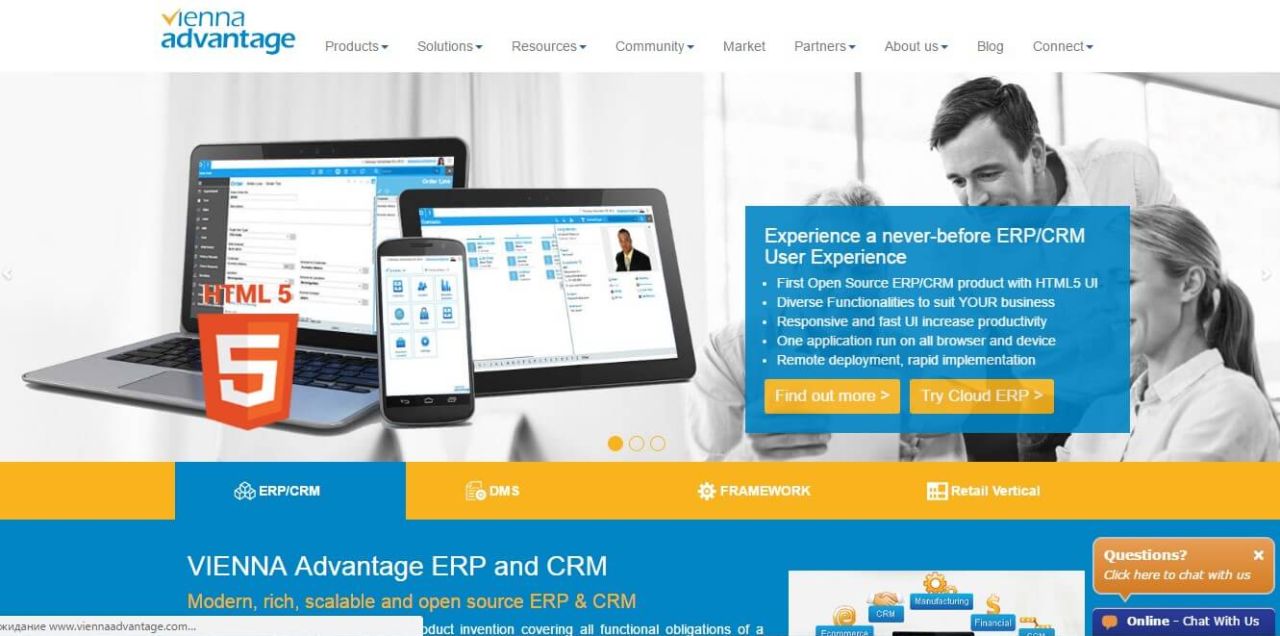
VIENNA Advantage is an innovative ERP and CRM system from Germany. It offers a 360-degree view of your business operations and helps managing and driving your company strategy end-to-end.
Features:
- Finance (multiple countries support, taxation, budgeting)
- Supply chain management (inventory optimization, automation of warehousing operations, purchasing requirements consolidation, multiple-level bill of materials management)
- Customer relationship management (follow-ups, proactive reminders, scheduling recurring invoices, contract templates)
- Project management (cost calculation, structuring, templates)
- Human resource and payroll
- Document management system
- Services (invoicing, billing, contracts renewal, )
- Modular and highly adaptable podium to fit any business application
- Intuitive workflow design and management
- External and internal communication management (email, SMS)
- Shared time management applications
- Powerful personalization and security
- Coding-free windows builder and report writer
- Real-time reporting and business intelligence + ability to integrate with external Bi packages
- Alerts, schedulers, and process engines
- Easy and visual system administration tools
- Accessible from anywhere (Cloud-based)
- Mobile friendly (HTML5-powered)
- Multilingual
In this overview, we’ve looked at 10 popular ERP systems and now want to draw some conclusions:
- All ERP systems above can take care of basic business operations: supply chain management (includes inventory, procurement, warehousing, logistics, etc.), finance, and marketing and sales.
- Most of the above tools are a lot more than just ERP and tend to include at least CRM functionality as well.
- Although most ERPs are generic and capable of satisfying the needs of numerous industries, Openbravo focused on the retail niche, and ERPNext specialized on small and medium businesses.
- Level of user-friendliness varies greatly among the tools. We concluded that the “nicest” ones are Odoo, VIENNA Advantage, Scipio ERP, and OpenBravo.
- Support of mobile devices is a current trend which some of the ERPs discussed highlight as their advantage – Opentaps, Openbravo, Odoo, ERPNext, Dolibarr.
- Support of online component of business is critical: content management, e-commerce, and cloud services are offered by several ERP tools.
To wrap up we would like to point out that when selecting the ERP system that will cater best to your business needs, do not forget to pay attention to such features (indirectly related to business) as security the software ensures, scalability of the solution, backup options, quality of customer service, frequency of program updates, and accessibility options (supported devices, operating systems). Even though it has no relation to the core functionality, it may greatly affect how successful your experience with the software will be, and how far you will be able to go with it should something change.

 (7 votes, average: 4.57 out of 5)
(7 votes, average: 4.57 out of 5)



Zeeshan Hasan says:
Odoo is written in python, not java.
Zeeshan Hasan says:
Likewise, WebERP is written in PHP, not java.
Paul Piper says:
Really cool review. Thanks!